Are you wondering which are the best scenic train rides in Switzerland? Making the right choice is not easy because Switzerland has so many panoramic trains, and picking up one depends also on your itinerary and the season. Read on, and get ready to board one of Switzerland’s scenic trains.
This post may contain affiliate links to carefully selected services. If you make any purchase, I get a small commission at no extra cost to you.
I still have to hear of someone who doesn’t have Switzerland on their travel bucket list. The country is famous for its breathtaking scenery, pristine alpine lakes, verdant meadows, and picture-perfect towns.
Must-see in Switzerland include cities like Lucerne, Zurich, Geneva, and the capital Bern. Furthermore, it would be unthinkable not to see the beautiful Swiss mountains. Not to speak about having at least a scenic train ride, one of the best things to do in Switzerland.
How to Choose Your Scenic Train Rides in Switzerland
Over the years, I experienced a few of them. As for the ones still on my wish list, I asked a few fellow travel bloggers to share their stories and tips.
Jungfraujoch Top of Europe
The Jungfraujoch Top of Europe railway is easily one of Switzerland’s most popular attractions. This Swiss panoramic train connects Interlaken to Jungfraujoch via Kleine Scheidegg or Lauterbrunnen. At an altitude of 3454 m (11,332 ft), Jungfraujoch is Europe’s highest railway station and an incredible engineering work.
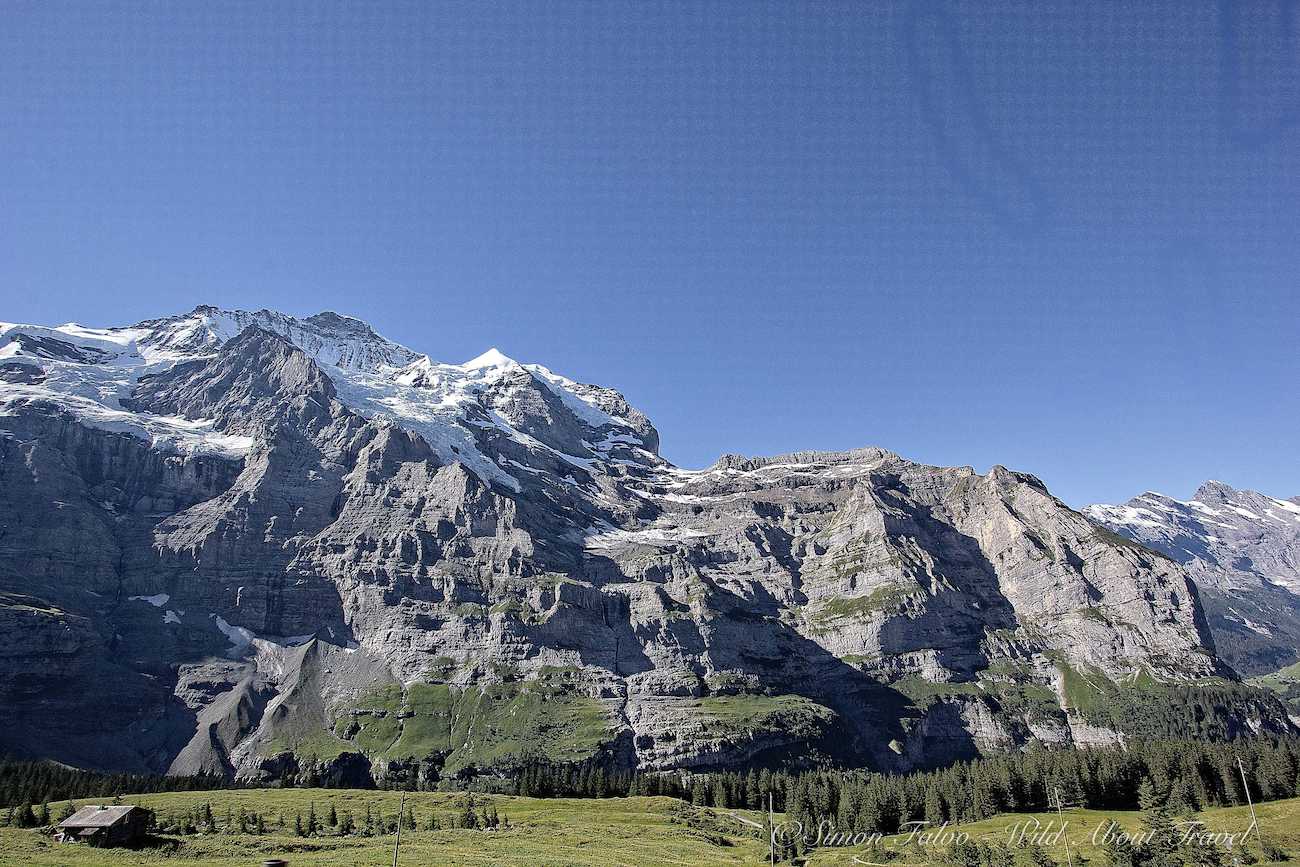
Along the way up, the Jungfraujoch cogwheel train stops twice, allowing passengers to get a glimpse of the landscape from large holes carved in the tunnel.
Once you reach the Jungfraujoch railway station, there are several things you can do. The one activity not to miss is taking the fast elevator to the Sphinx Observation Deck.
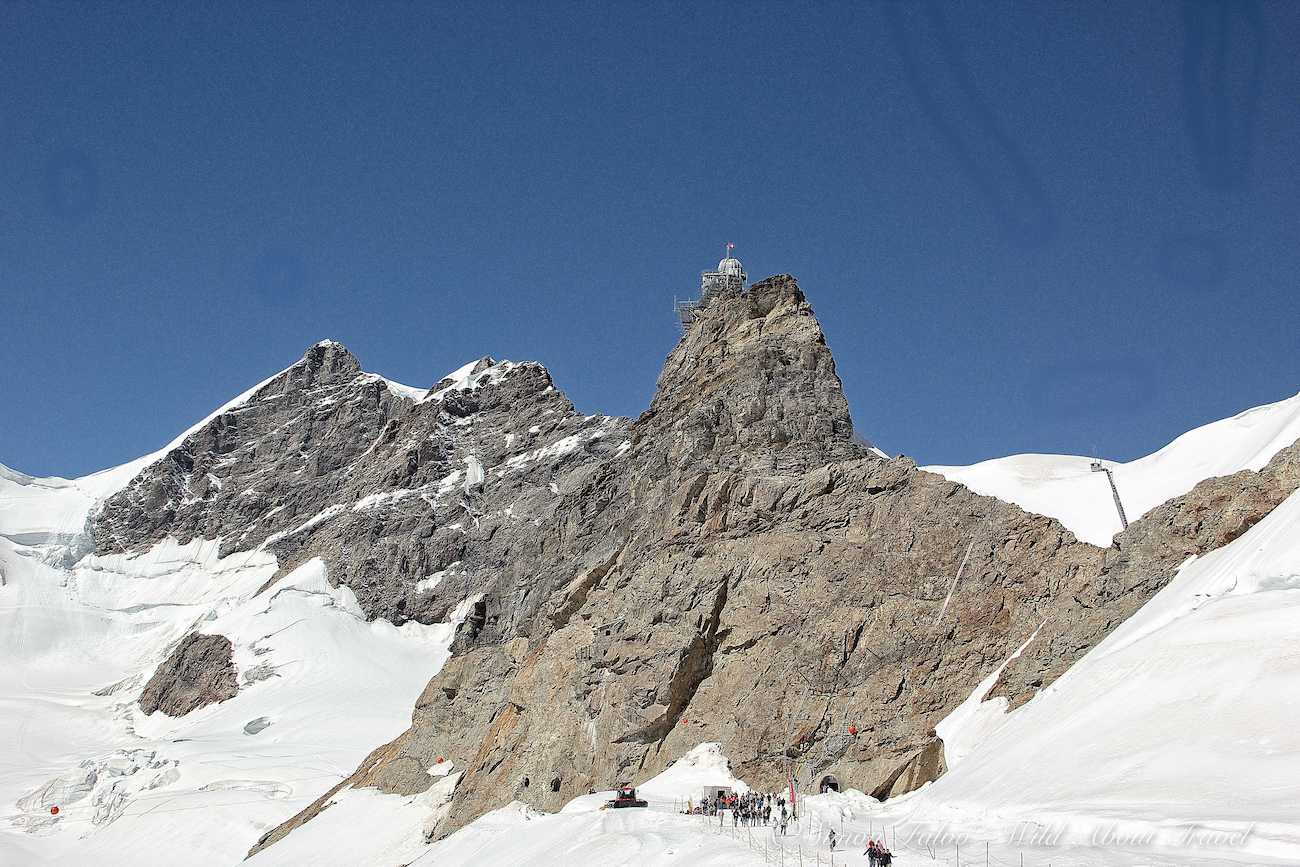
From there, you’ll admire one of the most gorgeous sceneries of the Alps and a white wonderland. The view of the Aletsch glacier, a long, winding tongue of ice surrounded by snow-capped peaks, is simply breathtaking.
Together with the Dolomites, I consider the Jungfrau-Aletsch area one of the most awe-inspiring alpine landscapes in the world. And not just because they are both UNESCO World Heritage Sites.
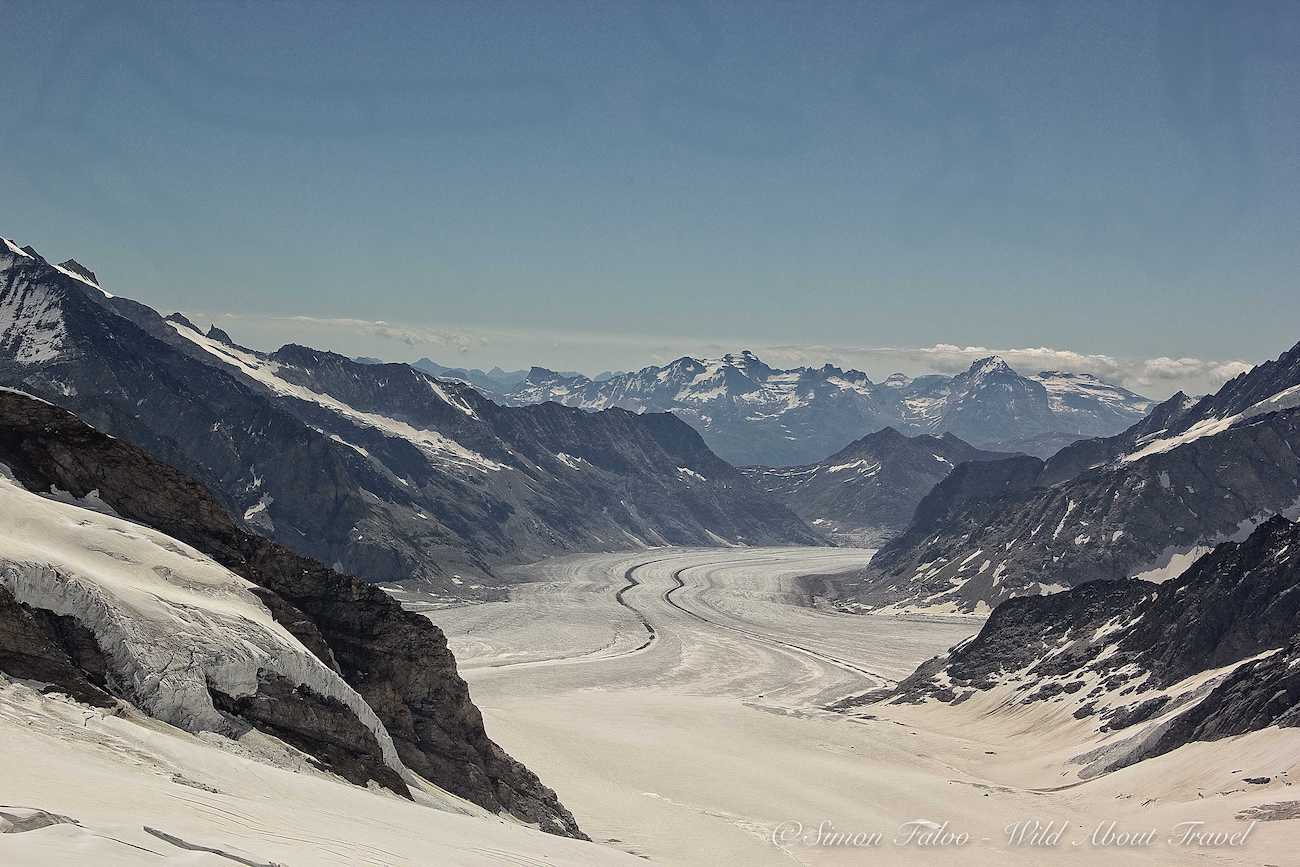
Nothing comes cheap in Switzerland, and the Jungfraujoch excursion is unquestionably pricey. But you’ll treat yourself to one of the best experiences in the Alps.
How to plan the Jungfraujoch scenic train ride
Public transport in Switzerland is very efficient, and you can buy your ticket at the train station and travel by yourself. However, remember that the Jungfraujoch Bahn is one of the top attractions in Switzerland. Thus, I suggest you book your seat on the train.
Alternatively, there are several organized or guided tour options.
- The Day Trip to Jungfraujoch – Top of Europe from Zurich
- You can also take a day trip from Lucerne to Jungfraujoch Top of Europe.
- Finally, you can buy tickets online in advance from Interlaken to Jungfraujoch Top of Europe.
TIP: The Swiss Travel Pass
Public transportation in Switzerland is capillary, very efficient, but alas also expensive. The Swiss Travel Pass allows unlimited use of train, bus, and boat transport, including Switzerland scenic trains. Additionally, you get free access to 500+ museums and up to 50% discount on other mountain excursions. The Switzerland Travel Pass might be the most cost-effective option if you’re planning to get around a lot.
Check out the Swiss Travel Pass prices for 3-, 4-, 6-, 8-, or 15-days
Golden Pass Line
The Golden Pass panoramic train is another scenic train in Switzerland you should look at. The Golden Pass Line is actually the combination of three different trains winding up and down the slopes amid mountain landscapes, delightful small towns, and pristine lakes.
Golden Pass: Montreux-Zweisimmen
The first leg starts in Montreux, on Lake Geneva, and ends in Zweisimmen.
As the train climbs up the meandering track, you can admire the vineyards and enjoy the stunning views of Lake Geneva and the mountains in the background. After a while, the train reaches the Prealps. In Summer, it’s all about shades of green, from the emerald pastures to the darker pine trees. All around, cows are grazing, and the landscape is dotted with super cozy carved wooden chalets, in the typical mountain architecture of this area.
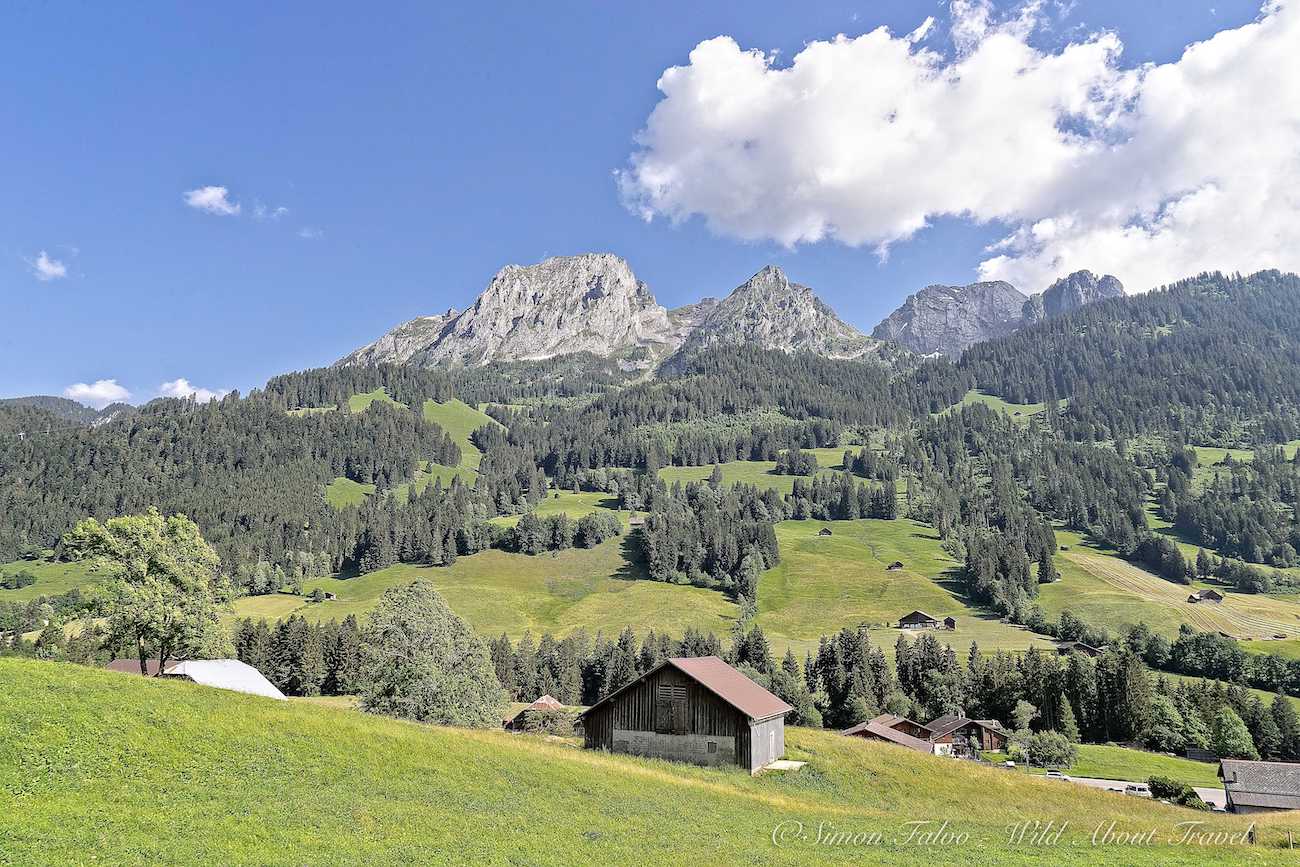
You’ll pass Gstaad, one of the poshest destinations in the world, until you reach Zweisimmen.
I grew up in this area, and can’t remember how many times I caught this train. Decades later, I’m in love with these views as I was the first time.
Golden Pass: Zweisimmen-Spiez-Interlaken
Yet another scenic train ride, this time through the verdant Simmental, up to Spiez and Interlaken. A good portion of the valley is narrower than the previous ones but idyllic all the same. If you look closely at the houses, you’ll notice that the architecture is slightly different, especially in the shape of the roofs.
When the train reaches the end of the Simmental, approaching Spiez, you’ll start to spot Lake Thun and its turquoise water. From there, you’ll ride along the lakeshore to Interlaken, surrounded by breathtaking scenery.
Golden Pass: Interlaken-Luzern
The last leg of the Golden Pass panoramic train is another exciting journey, all about lakes and pastures.
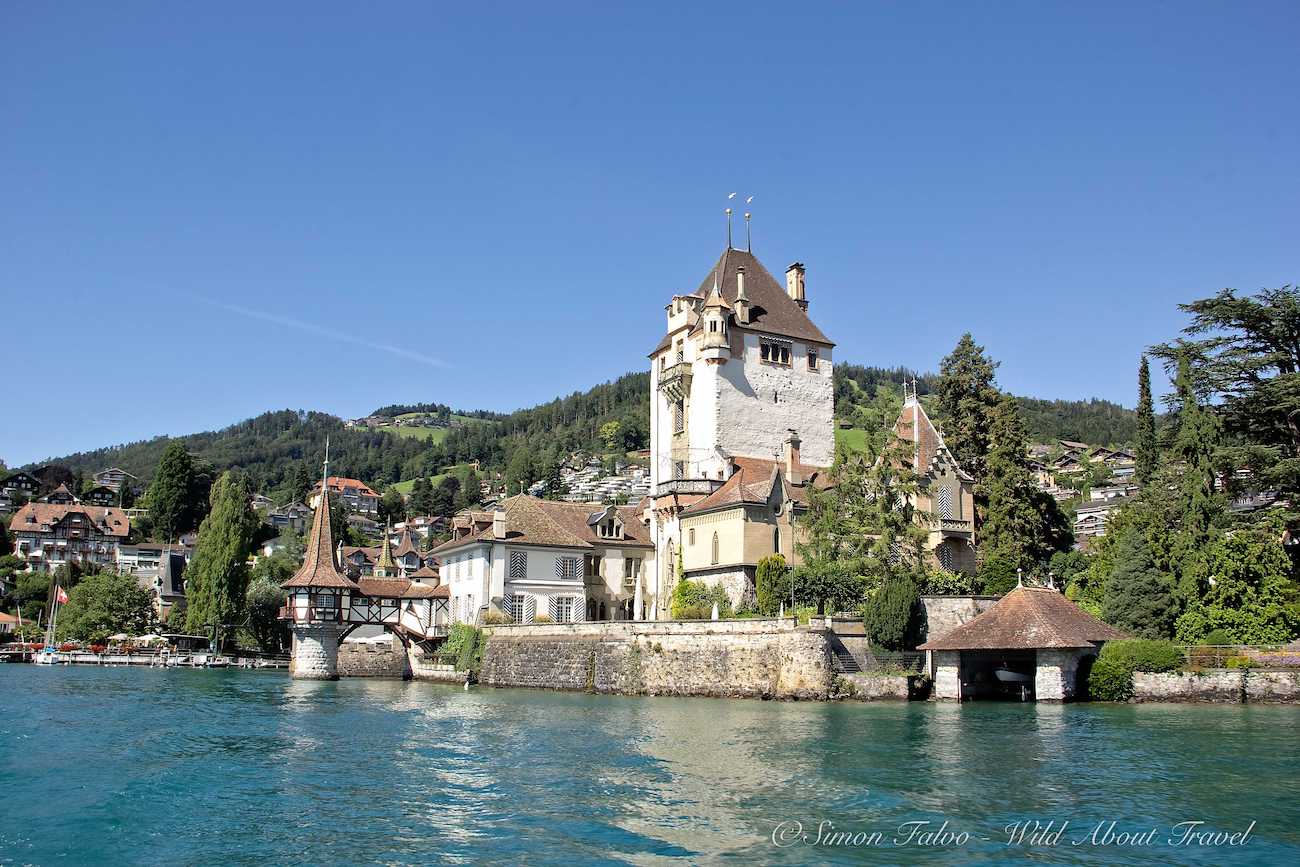
The track follows Lake Brienz, with its unique emerald and turquoise colors, and passes other smaller lakes until it reaches Luzern. You’re now at the heart of Switzerland and ready to discover one of the most beautiful Swiss cities.
How to plan the Golden Pass scenic train ride
The Golden Pass operates year-round. Although a reservation is not compulsory, I recommend it between Montreux and Zweissimen, being a touristy ride. You can also travel only one segment, combining it with other scenic train journeys in Switzerland, or ride it as a day trip from Geneva.
Check out the timetable and prices on the Golden Pass website.
Glacier Express: Zermatt to St. Moritz
by Bridget – The Flashpacker
The Glacier Express is one of the best train rides in Switzerland and one of the world’s great railway journeys.
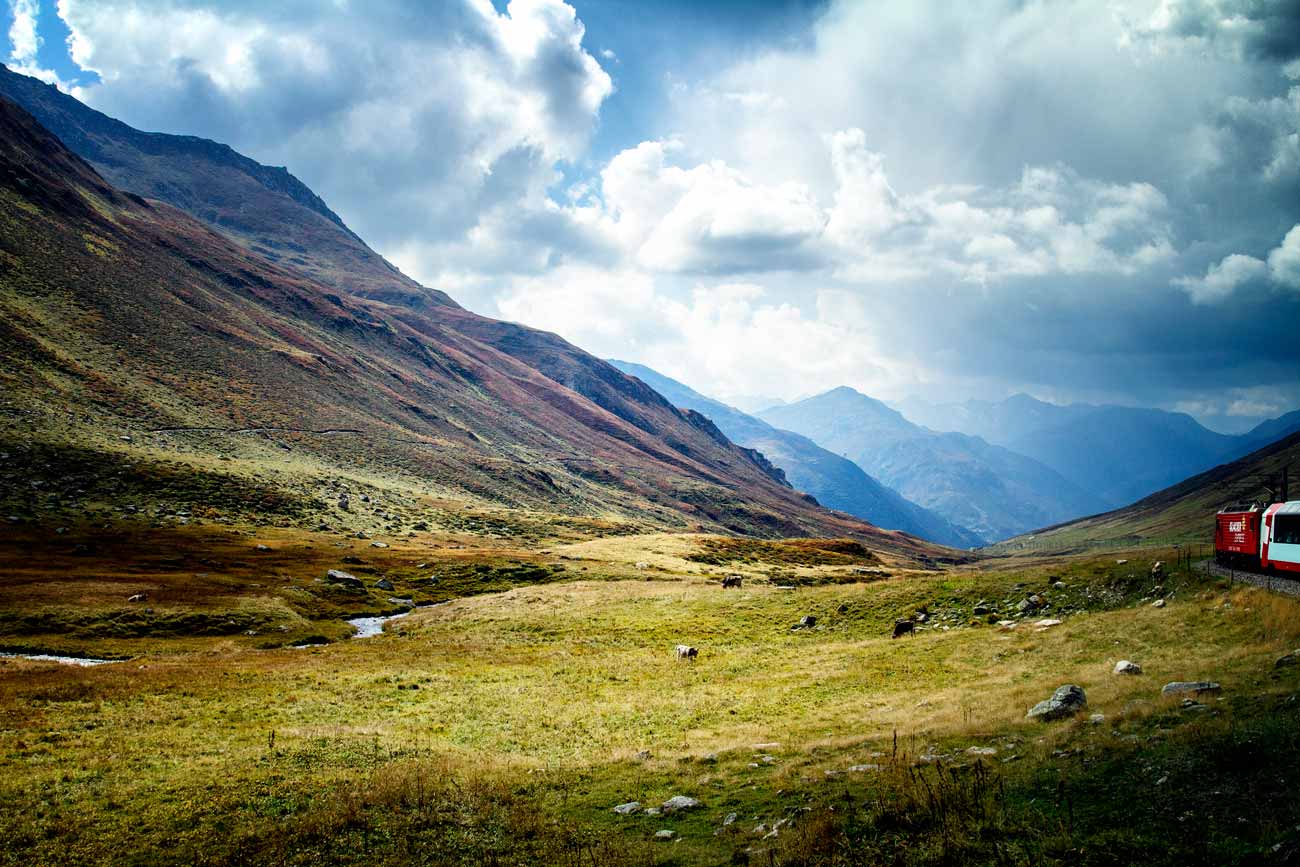
During the 300km, eight-hour journey from St Moritz to Zermatt, the so-called ‘slowest fast train in the world’ offers spectacular views. It trundles over the Landwasser Viaduct, with its elegant stone arches, and through the dramatic Rhine Gorge before reaching the highest part of the journey, the Oberalppass, at 2033 m. From here, the train’s approach into Zermatt takes you through the lush vineyards of the Valais region, teasing you with glimpses of the mighty Matterhorn.
As there is no way of telling which way the train will face, you won’t know which side you will be sitting on until boarding. But this doesn’t matter. Whichever side of the Glacier Express you are sitting on, you will get 180-degree views as the train carriages are enclosed in glass.
How to plan the Glacier Express panoramic train ride
Like other Swiss trains, this is not a cheap journey. However, the Glacier Express is included in the Swiss Travel Pass and the Interrail / Eurail pass, subject to a seat reservation fee payment. As this is one of Switzerland’s most famous scenic train rides, book well in advance.
Finally, take the opportunity to dine on board. Tucking into a hot meal, washed down with a glass or two of local wine, in the company of the unfolding Alpine landscape is train travel at its very best.
Check-out timetables and prices.
Gornergrat Bahn: Zermatt to Gornergrat.
by Carolyn of Holidays to Switzerland
One of the most scenic train rides in Switzerland is the climb from Zermatt to Gornergrat. This beautiful trip is traveled aboard the Gornergrat Bahn, the oldest electrified cog railway in the world, and offers spectacular views of the Matterhorn.
The Gornergrat train journey takes just 33 minutes from Zermatt. However, while most folks are keen to get to Gornergrat to see the impressive Matterhorn, you can disembark at any of the four intermediate stops along the route and rejoin a later service.
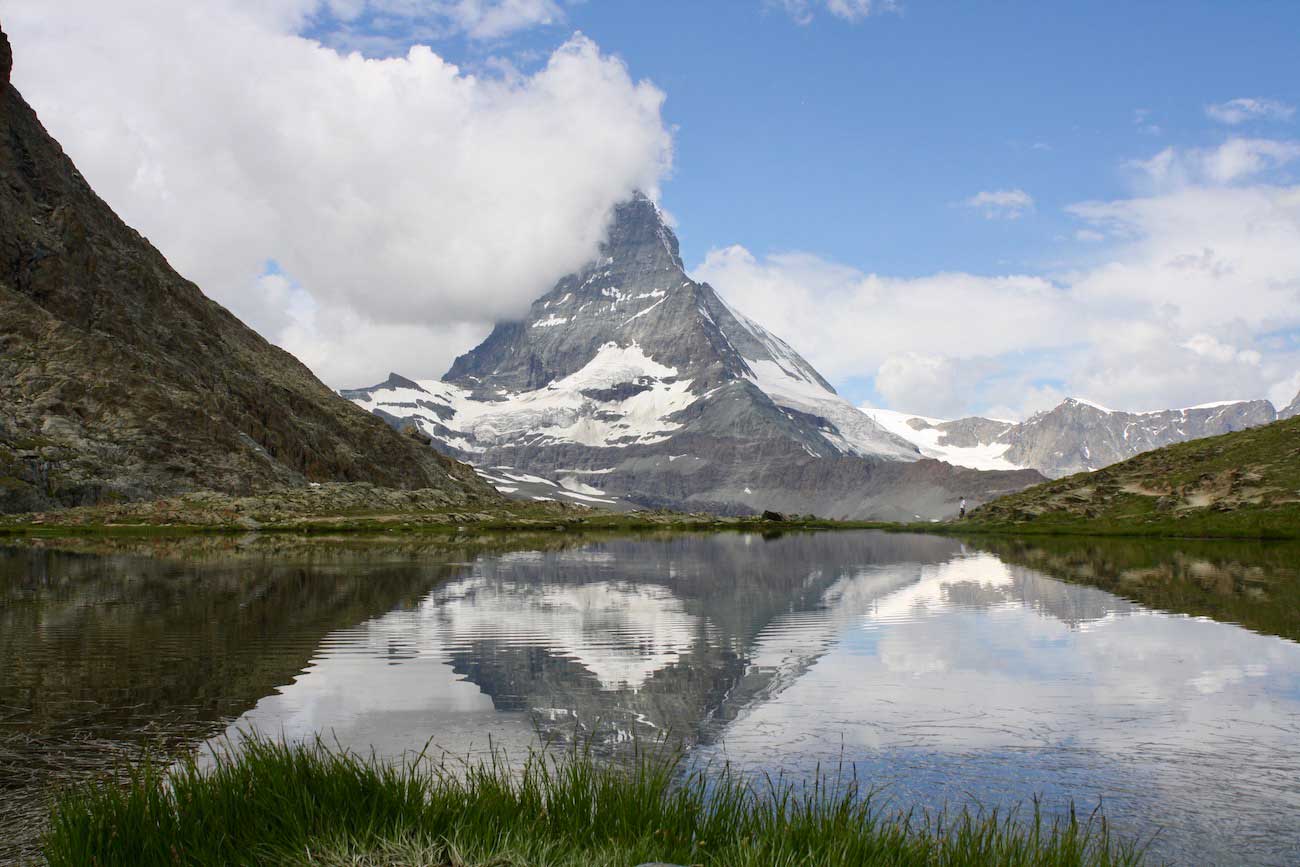
As the train winds its way upwards, you’ll pass waterfalls, cross over deep valleys, and you might even see some marmots. One thing’s for sure – there’s another incredible Matterhorn view around every corner.
At the summit (3,089 meters), there is plenty to see and do. The Matterhorn, of course, dominates the view. But the Gorner Glacier, which can be seen from a special viewing platform, is no less impressive. In total, you can see 29 four-thousand-meter peaks from here! There’s also a restaurant, souvenir shops, and even a chapel.
Gornergrat also offers plenty of hiking opportunities as well as skiing and sledding in winter.
Remember I mentioned the four intermediate stations along the route? My tip, if you visit in summer, is to return to Zermatt partly on foot. Catch the train from Gornergrat to Rotenboden and then enjoy an easy walk to Riffelberg. You’ll pass the pretty Riffelsee (Lake Riffel), and if you visit on a clear day, you will see the Matterhorn reflected in the Lake’s crystal clear water. Then, after lunch or a drink at Riffelberg, you can board the train again to descend to Zermatt.
How to plan the Gornergrat scenic train ride
The Gornergrat Bahn operates year-round, with departures every 25 minutes.
Check out the prices and buy in advance your Zermatt Gornergrat Bahn Ticket
Bernina Express, from Chur to Tirano
by Maureen – So Many Places! So Little Time!
Apparently, nearly everyone has heard of the famous Bernina Express, which is considered one of the best Swiss panoramic trains. It is a 90-mile (144 km) four-hour train trip from Chur, the oldest town in Switzerland, to Tirano, a small village in northern Italy. With the Gornergrat and the Glacier Express, the Bernina Red Train is one of the most scenic train rides in Switzerland and among the most beloved attractions.
This panoramic train is called an ‘express’ not because of its speed but because it stops at only ten or eleven stations. There is no way it can go fast as it crosses the Alps, climbing in loops and bends to an altitude of 2253 m through 55 tunnels and over 196 bridges. Yes! You read that correctly- 196 bridges.
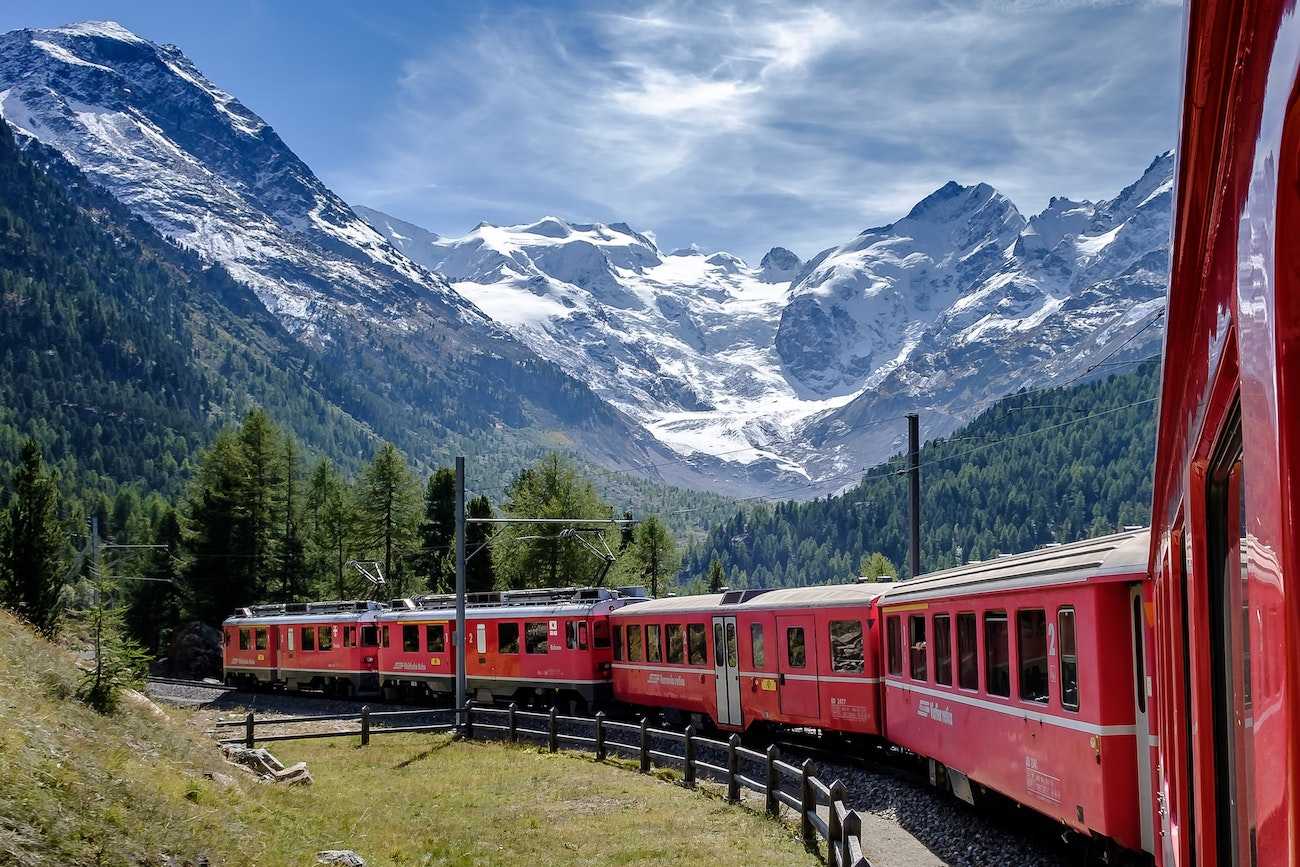
We left Chur on a beautiful winter morning at 8.32 a.m. and settled into our first-class seats in a spacious modern carriage with panoramic windows and an “InfoT(r)ainment” system for information on our phones. We relaxed as we left Chur and went through the rural countryside. Then, as we started climbing and the views became more and more spectacular, we were leaping from one side of the train to the other, with our phone cameras running red hot, particularly over the magnificent Landwasser viaduct.
We climbed up into the Alps, passing picture-postcard villages, glaciers, lakes, mountain peaks and lots of locals skiing and tobogganing. We reached the highest point at Ospizio Bernina and then made a dramatic descent, including the amazing totally circular Brusio spiral viaduct with views you have to see to believe. When you make this trip sit on the right-hand side of the train going from Chur to Tirano for the best views.
We have to go back and make this trip again so that we can get off the train at Alp Grum and enjoy a long and leisurely lunch out on the deck overlooking the Palu Glacier.
How to plan the Bernina Express scenic train ride
The Bernina Express is a scenic train journey between Switzerland and Italy. Therefore, you can also experience this unique train ride from northern Italy, being one of the many day trips from Milan.
Check out the timetables and prices on the RHB website.
Pilatus Rack Railway: Alpnachstad to Pilatus Kulm
by Priya Vin – Outside Suburbia
We love taking the colorful and efficient trains in Switzerland. One of our favorite scenic train rides was the one we took to Pilatus. It is an engineering marvel that climbs up a pretty steep gradient of up to 48 percent, in about 30 minutes. It goes from Alpnachstad to Pilatus Kulm, and you get to enjoy some pretty amazing scenery as the rack railway makes its way up the mountains.
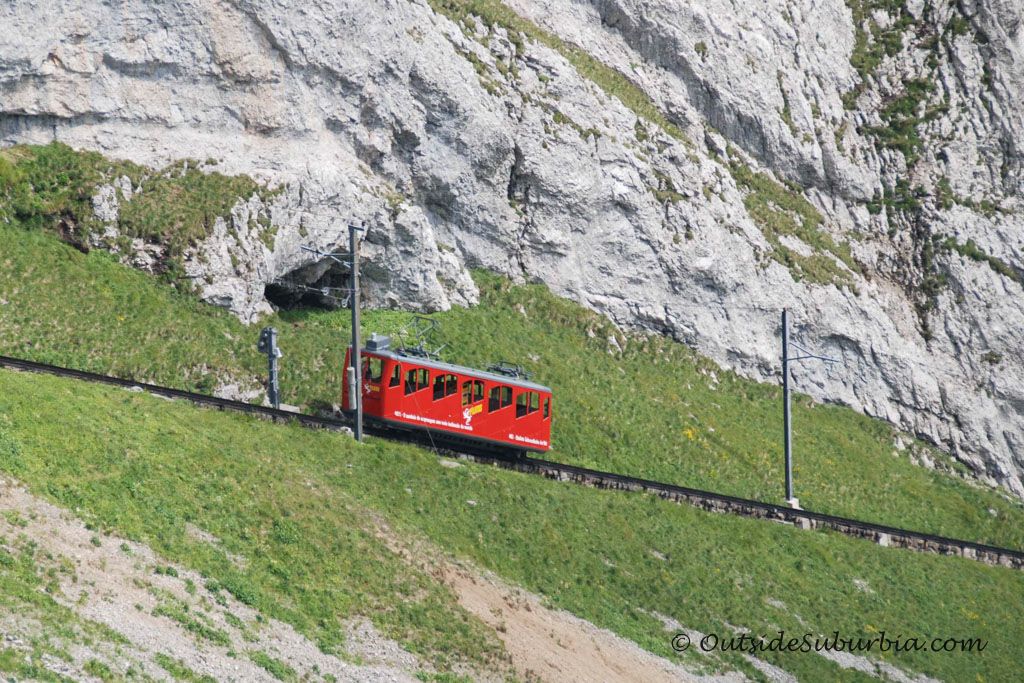
Mt. Pilatus is a mountain range overlooking Lucerne in Central Switzerland. The name “Pilatus” means “cloud-topped,” and the mountains do seem to be touching the heavens. It’s a must-see if you are visiting Lucerne. There is so much to do in Pilatus. Actually, you can spend an entire day playing in the parks, riding the cable cars, taking the cogwheel railway, hiking, and riding the toboggan, which is the longest one in Switzerland.
As the bright red cogwheel train climbs up, through the expansive windows, you can see alpine meadows, mountain ranges, and striking rock formations. Once you get to Pilatus Kulm, you can hike to the many peaks, including the highest one, Tomlishorn at 6,982 ft. Then you take the cableway and gondola to Kriens. You can stop at a rope park or ride the toboggan, which is the longest run in Switzerland. Then ride a bus back to the railway station.
How to plan the Pilatus scenic train ride
That’s not a winter trip since the cogwheel railway operates from around mid-May to mid-November.
There are several routes and options to get to Mt. Pilatus, and the Golden self-guided round trip is a popular one. You start at the Lucerne railway station and take a local train. The train ride takes about 20 minutes along the shores of Lake Lucerne to Alpnachstad. From here, you ride the cogwheel train to Pilatus.
For a real treat, in Summer, you can combine Mt. Pilatus cable car and cogwheel train ride with a lake cruise. The Lake of the 4 Cantons is one of the most beautiful in Switzerland.
Brienzer Rothorn
by David Angel – Delve Into Europe
The Brienzer Rothorn is one of several scenic train rides in Switzerland, this one in the central area of the country. It’s a steam rack railway which makes the hour-long journey from the shore of Lake Brienz (Brienzersee) to the summit of the Brienzer Rothorn mountain, 2350 meters above sea level.
It’s well worth the visit because it’s one of the classic Swiss Alpine climbs, up there with the Schynige Platte or Grindelwald to Kleine Scheidegg.
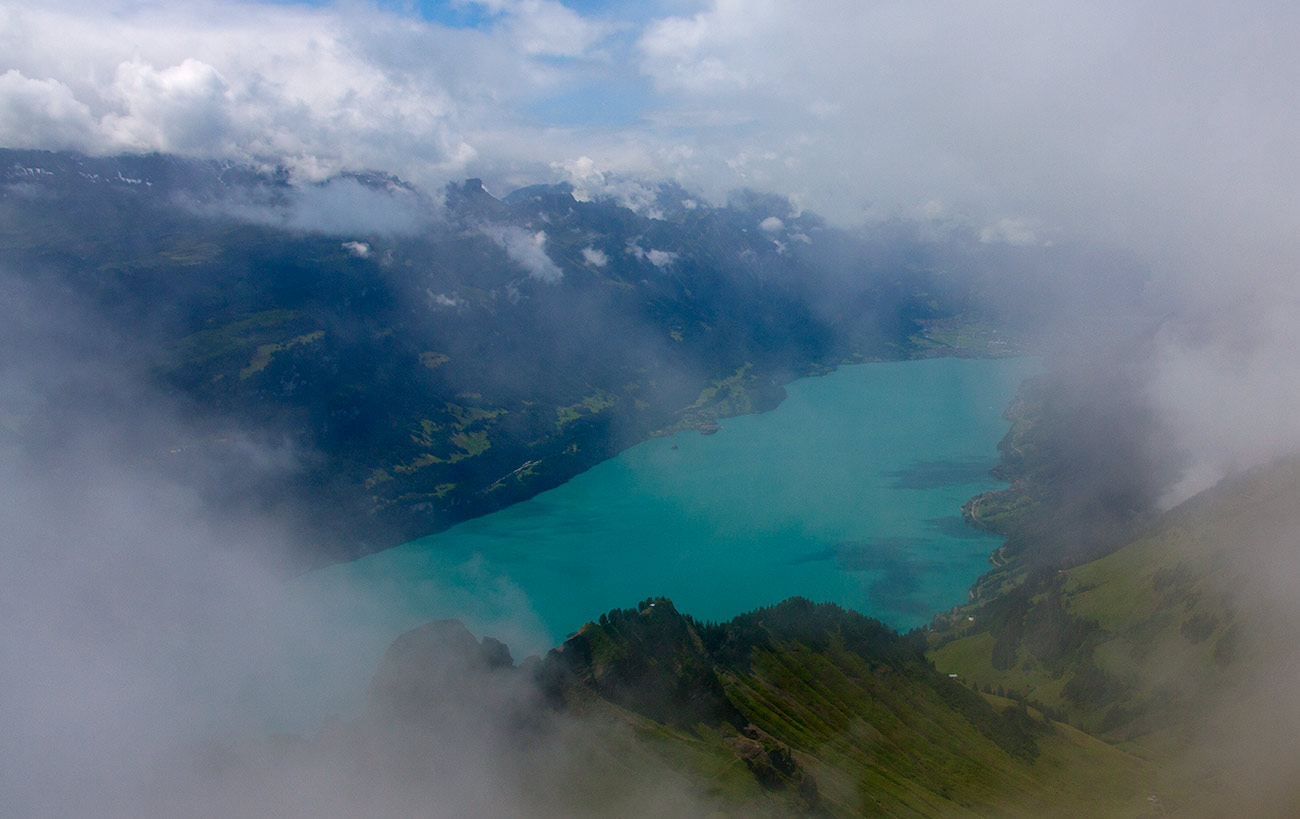
The train gradually climbs above the pretty lakeside town of Brienz, slowly ascending towards alpine meadows where you can hear the occasional clink of a cowbell between steam engine chugs. It then climbs through forests before reaching open mountain terrain where, if you’re lucky with the weather, the unique views start to happen.
After an hour, the train pulls up at the summit station, where there’s a café where you can warm up. We had a very cloudy day and had all but given up on seeing anything when the clouds parted for a second or two. Enough to reveal the peaks of the Bernese Oberland and the stunning turquoise water of Brienzersee. Then it was all gone. The website suggests you can see 693 peaks on a clear day. We weren’t quite so fortunate, but it was worth the ascent just for that momentary glimpse of the Lake and mountains.
How to plan the Brienzer Rothorn scenic train ride
The full Brienzer Rothorn Bahn summit service runs from June to October, and an additional service starts in May, taking you halfway up the mountain to Planalp station.
You can check the timetable and prices on the Brienzer Rothorn Bahn website.
As you can see, there are plenty of scenic train rides in Switzerland. Choose the panoramic train that best suits your itinerary and get ready for unique and unforgettable sceneries.
Pin for later!
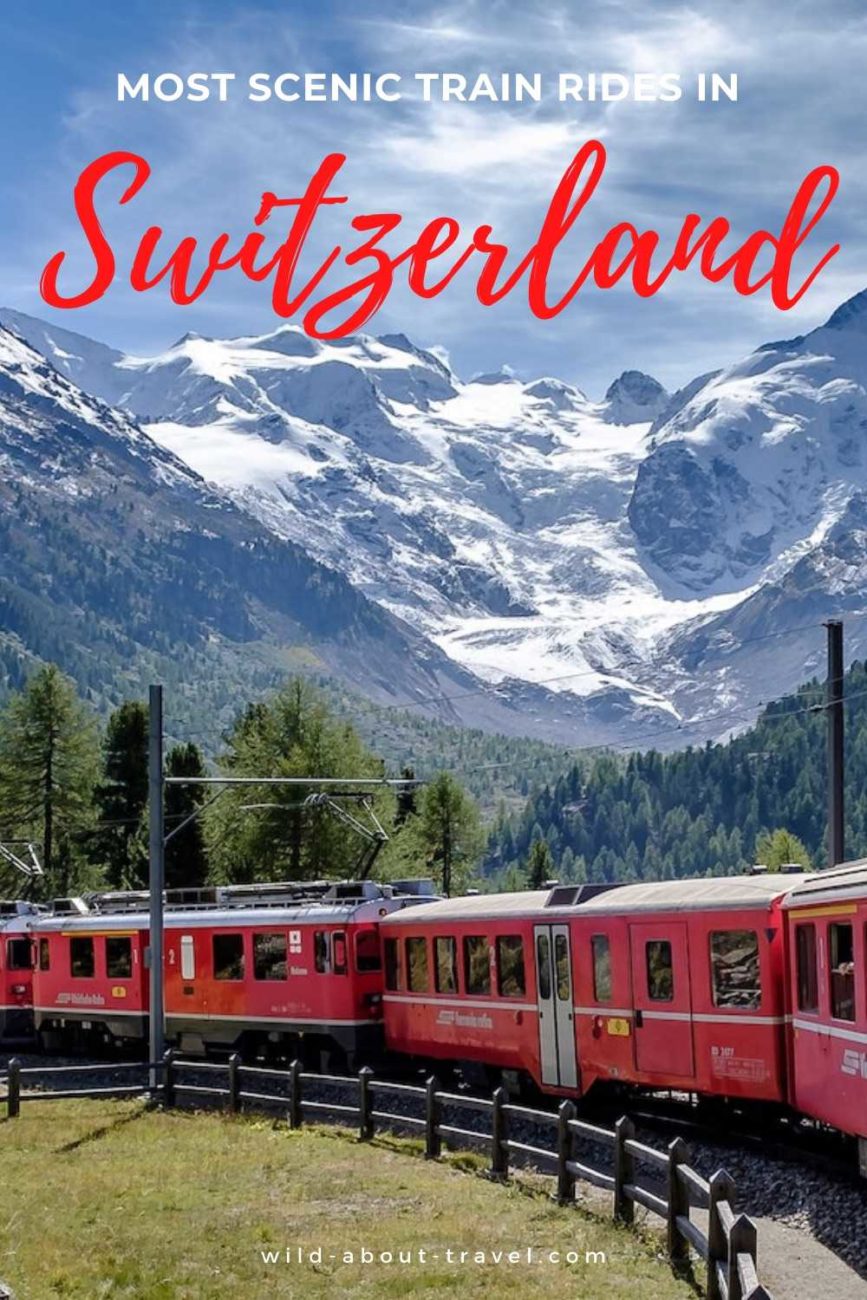

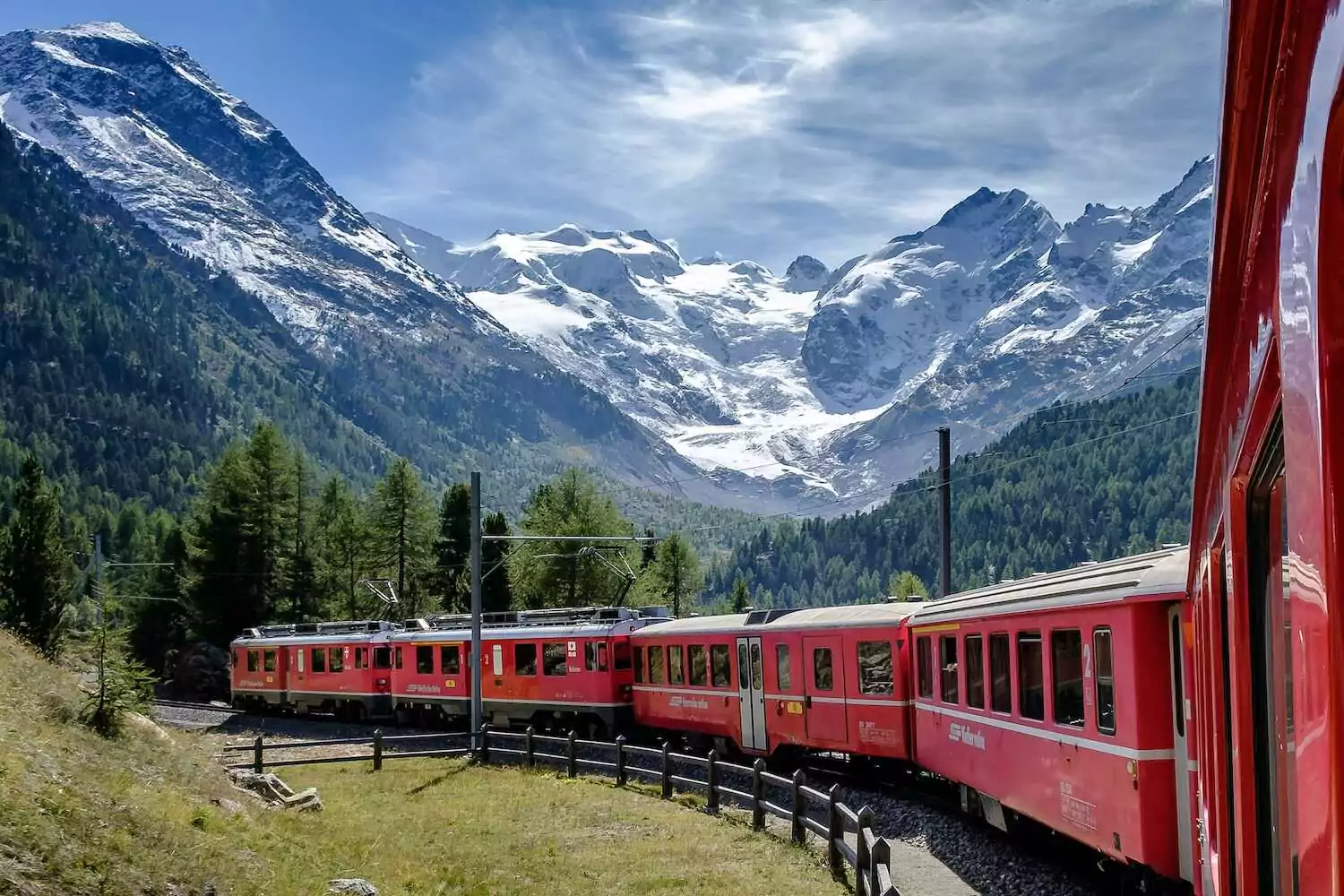


1 thought on “The Most Scenic Train Rides in Switzerland. How to Discover the Best of the Alps”